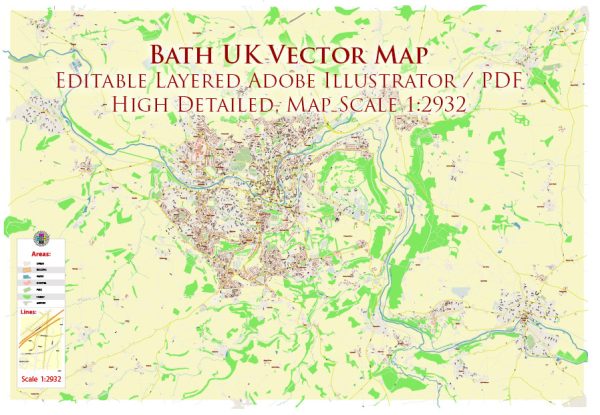Bath, a historic city located in Somerset, England, has a rich history of urban development that spans thousands of years. Here’s a brief overview of the city’s urban development history:
- Roman Era (1st to 5th Century): The city of Bath, then known as “Aqua Sulis,” was founded by the Romans around the 1st century AD. They recognized the natural hot springs and built elaborate baths, a temple, and other structures around them. The Roman baths became a popular destination for relaxation and healing.
- Medieval Period (5th to 15th Century): After the Roman period, Bath went through a period of decline. However, it continued to be a place of pilgrimage and some settlement during the medieval period. The city’s Abbey, founded in the 7th century, was a significant religious and cultural center.
- Georgian Era (18th Century): The most significant period in Bath’s urban development occurred during the 18th century when it became a fashionable spa town. This era is characterized by the Georgian architectural style, featuring elegant terraces, crescents, and squares, with the Royal Crescent being one of the most iconic examples. These buildings were constructed from the locally quarried Bath stone, giving the city its distinctive golden appearance.
- Victorian Era (19th Century): Bath continued to grow and evolve during the Victorian era. The city expanded beyond its historic core, and new neighborhoods were developed to accommodate the growing population. The Great Western Railway connected Bath to London and other cities, making it more accessible.
- 20th Century: The 20th century saw the preservation and restoration of Bath’s historic architecture. Efforts were made to protect the city’s heritage, and Bath was designated as a UNESCO World Heritage Site in 1987. The city’s development became more focused on preserving its historic character and promoting tourism.
- Modern Era: In the 21st century, Bath remains a popular tourist destination and a vibrant city. The historic city center retains its Georgian charm, and new development projects are carefully managed to maintain the city’s unique character.
Bath’s urban development history is closely tied to its thermal springs, which have been a central feature of the city’s identity for over two millennia. The Georgian architecture and Roman baths, along with the city’s UNESCO World Heritage status, make Bath a unique and historically significant city in the UK.


 Author: Kirill Shrayber, Ph.D.
Author: Kirill Shrayber, Ph.D.